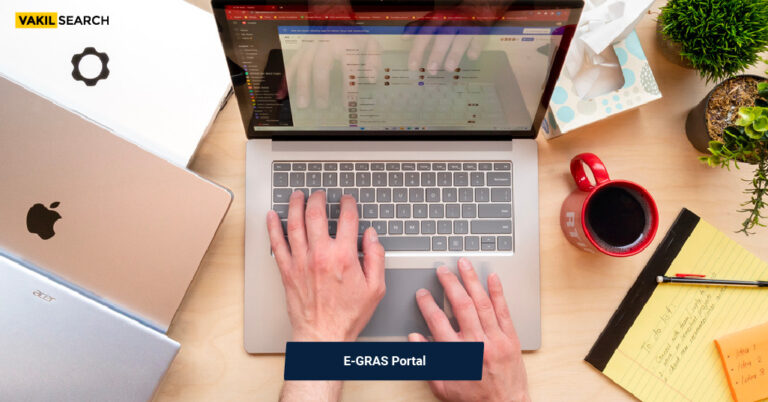Do you know closing entries in accounting is as crucial as recording other transactions? Read on to learn more about the significance of closing entries in accounting.
Every economic transaction in a company moves through an accounting process, a multi-step method that documents, outlines, and categorises your trades into financial statements. Furthermore, after most of the cycle is finished and financial accounting statements are created, one final step in this comprehensive process is closing your financial books. Closing your financial books concerns writing closing entries to transfer transient account credits into the company’s permanent reserves. Keep reading below to learn more about the significance of closing entries in accounting.
What Do Closing Entries Entail?
Closing entries refer to detailed journal entries employed to transfer balances from interim to permanent reserves at the end of an accounting course. These journal entries concentrate your accounts so you can define your owned earnings or your corporation’s share after paying expenditures and dividends. In addition, creating closing entries is one of the final stages of the accounting process.
Moreover, many businesses create closing entries to recall when your accounting term finishes. In simpler terms, closing entries involve moving data from temporary accounting to permanent accounts, and these temporary accounts comprise revenue, dividends and expenses. And closing entries are employed to reset the credits of temporary accounting to zero, so they are prepared for the next accounting term.
Understanding the Importance of Closing Entries in Accounting and Bookkeeping
Without closing earnings accounts, you would not be able to compare how much your company earns each term because the sum would pile up. Moreover, without closing expenditure accounts, you cannot compare your company costs from period to period. In addition, it would be best if you employed closing entries to lower the worth of your temporary accounts to zero.
That way, your subsequent accounting duration does not have a credit in your earnings or expenditure account from the prior period. Moving funds from transient to permanent accounts also edit your company’s owned earnings account. You can document retained revenues either on your income statement or balance sheet. Without transferring accounts, your financial records will be inaccurate.
How Do You Write Closing Entries?
Accounting software automatically manages closing accounting entries for you. However, you must manually write closing entries every accounting span if you do not own accounting software.
You can make a closing entry by closing your income and expenditure accounts and moving the credits into an “income summary account.” In addition, the income summary account is only employed in closing cycle accounting online. The income summary account is the figure of your earnings minus expenditures. You will close the earnings summary account after moving the sum into the owned earnings account, which is a permanent one. Below are some vital steps to creating a closing entry:
- Close payment accounts by moving funds to the income summary account
- Close income summary account by moving funds to owned earnings account
- Close expenditure accounts by moving funds to an income summary account
- Close dividends by moving funds to owned earnings account (if relevant)
Also, to give you a better idea, here is a detailed overview of the ways you can close your accounts.
-
Close Revenue Accounts
You must know that revenue accounts are reduced by debits. Therefore, you must debit your revenue reserves to decrease it, which implies you must also credit your earnings summary account.
| Date | Account | Notes | Debit | Credit |
| XX/XX/XXXX | Revenue | Closing journal entries | X | |
| Income Summary | X |
-
Close Income Summary Account
Whether you debit or credit, your income summary account will rely on whether your earnings are more than your expenditures. If your payments are higher than your expenditures, you will debit your earnings summary account and credit your owned earnings account. It improves your retained earnings account.
| Date | Account | Notes | Debit | Credit |
| XX/XX/XXXX | Income Summary | Closing journal entries | X | |
| Retained Earnings | X |
Also, you must credit your earnings summary account and debit your retained profits account if your earnings are less than your expenditures. It reduces your retained earnings account.
| Date | Account | Notes | Debit | Credit |
| XX/XX/XXXX | Retained Earnings | Closing journal entries | X | |
| Income Summary | X |
-
Close Expense Accounts
Since expenditures are reduced by credits, you must credit the reserves and debit the income summary account.
| Date | Account | Notes | Debit | Credit |
| XX/XX/XXXX | Income Summary | Closing journal entries | X | |
| Expense | X |
-
Close Dividend Accounts
You must close your dividend account if you spent out dividends during the accounting term. Now that the earnings summary account is closed, you can instantly close your earnings dividend account with your owned earnings account. Debit your owned earnings account and credit your dividends expenditure. It lowers your retained earnings account.
| Date | Account | Notes | Debit | Credit |
| XX/XX/XXXX | Retained Earnings | Closing journal entries | X | |
| Dividends | X |
Understanding Temporary vs Permanent Accounts
Temporary accounts comprise three accounts:
- Expenses
- Revenue
- Dividends
Accounts are deemed “temporary” when they only store trades over one accounting term. In addition, temporary accounts get closed or zero-ed out, so their credits don’t get jumbled up with those of the subsequent year. On the other hand, permanent accounts mean balance sheet accounts, which comprise:
- Assets
- Owner’s equity (or retained earnings)
- Liabilities
These permanent accounts maintain credits that extend one year. In other terms, they mean the long-standing finances of your company. The earnings, expenditure, and premium account balances are transferred to the included returns permanent account when making closing entries. If you possess a sole proprietorship, you must close interim accounts to the owner’s equity instead of owned earnings.
Also, Temporary Accounts entries are only utilized to document and collect the accounting or financial trades over the accounting year, and they do not mirror the business’s financial performance. On the contrary, Permanent Account entries exhibit the long-standing economic status of a business. Transferring the credits to this account is essential because it considers the suitable consideration of liabilities or assets for future utilization. Therefore, if the closing entries are not made, there will be inaccurate reporting of financial books. And not keeping an exact description of modification in retained profits might deceive the investors about a firm’s financial standing.
Conclusion
All in all, closing entries are vital entries completed at the end of an accounting course, that transfer transient account credits into a permanent account. The objective of closing entries is to combine your accounts so you can select your possessed revenues. Retained returns represent the share your business owns after paying expenditures and dividends for a particular time period.
For more legal information, visit Vakilsearch!
Also,Read;









